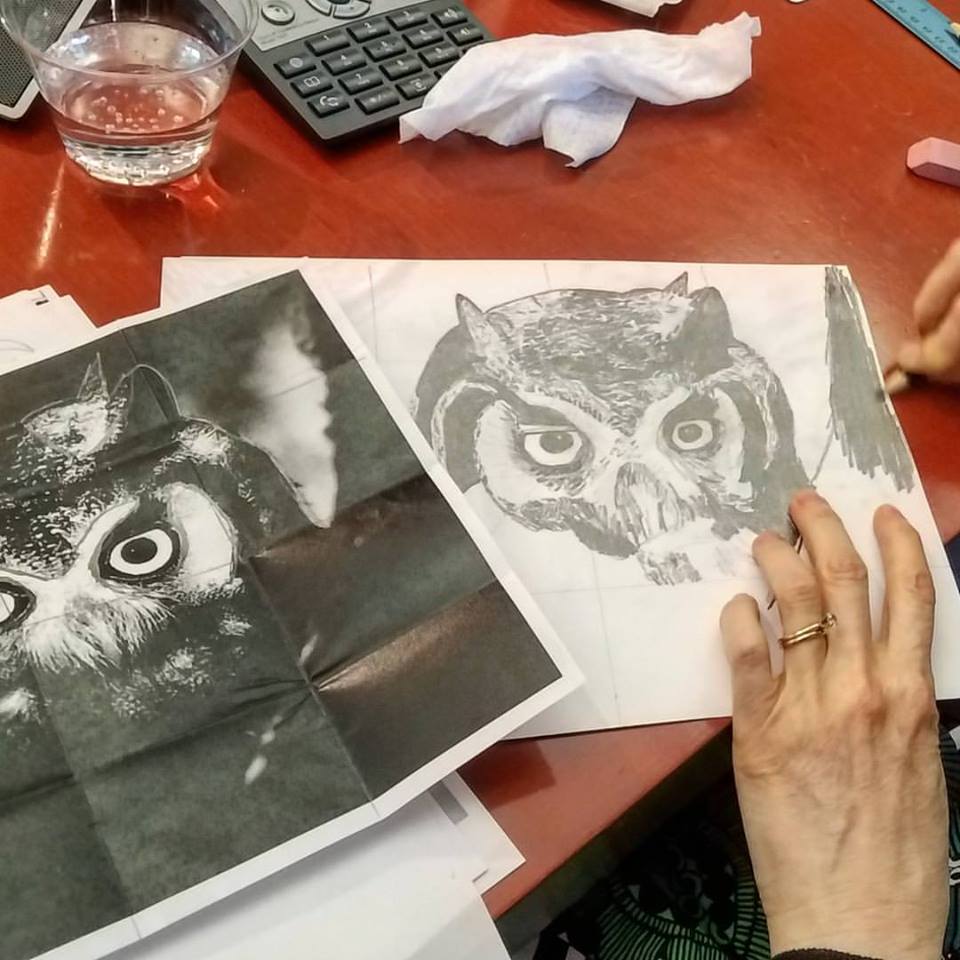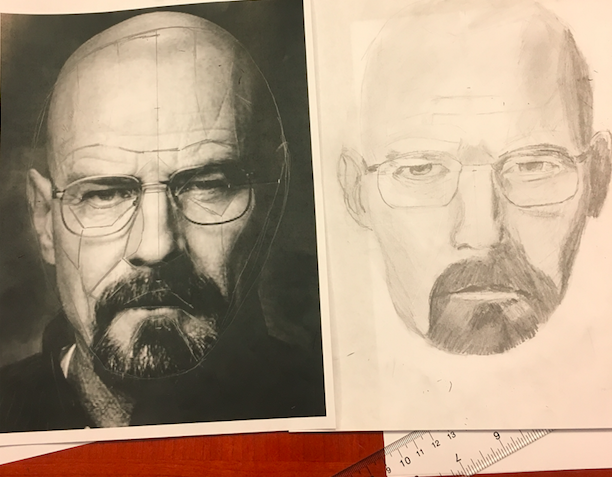Once a month, a group of 10 to 15 journalists gets together at the offices of Reuters in New York.
They’re not working.
They’re not tweeting.
They’re drawing.
The classes started up last July, and they’re taught by a journalist-turned-artist who knows that you think you can’t draw. She’s out to prove you wrong.
Leah Kohlenberg worked for 10 years as a journalist, including a stint at Time magazine in Hong Kong. When she came back to the states after teaching journalism abroad, Kohlenberg took on some freelance work and tried out painting.
Since, she’s made a living making and teaching art. In the last few years, she started thinking about teaching people in her former profession how to draw. Journalists spend a lot of time with analysis and logic. Drawing requires different mental muscles, she said, and offers a place to focus on a single task.
“Doing this kind of problem-solving, it’s cross-training your brain,” Kohlenberg said.
And it’s exactly the kind of mental-stretching she thought journalists needed. Kohlenberg tested her theory out with her first boss, Janet Roberts, now a data editor at Thomson Reuters.
Before her first class, Roberts said, she couldn’t draw a stick figure. But after…
“I was just totally hooked from the get-go,” she said. “I could not believe what I was able to draw.”
She started taking weekly classes, and she started thinking about how other journalists could benefit from becoming more visual thinkers. So last July, Roberts organized an introductory class at Reuters, which about 20 people came for. And they’ve kept it up since. The journalists pay for their own classes, and Roberts expenses the supplies.

Journalists drawing the live model at Reuters. (Photo courtesy Janet Roberts)
They’ve drawn in pencil, charcoal, ink and, most recently, with a live model. Anecdotally, Roberts has seen reporters move through writer’s block and apply the concepts of drawing to putting together complicated stories.
“I personally have found that visual tasks do come easier now,” she said. “I see light and shadow and shapes, which weren’t obvious to me before.”
Since starting the classes at Reuters, Kohlenberg has taught classes at the Center for Investigative Reporting and the Portland Business Journal, and she’s in talks with five other newsrooms. She also taught in two classes at the University of Nevada, Reno.
“I saw several of the students who’d been struggling a little bit with organizing their thoughts around issues that were new to them,” said Bob Felten, an associate professor of communication at he Reynolds School of Journalism at The University of Nevada, Reno. “They seemed to be able to do that a little better after they had gone through these exercises.”
All three would like to see some concrete studies exploring the impact that drawing has on other tasks. But even without them, the practice is a worthwhile one, Roberts said.
“It’s a high-stress profession, and it’s the only thing I have found in my life where when I sit and draw or paint, my mind completely shuts off, and I’m in the moment just doing it,” she said. “Even if it does nothing else for you but that, it’s definitely valuable.”
Kohlenberg recently offered another introductory drawing class at Reuters for people who didn’t get to start last summer. And last month, a few journalists from The New York Times came for a class, Roberts said. Next month, a professor from the City University of New York plans to attend.
When they start, most people don’t think they can draw.
“That is the knee-jerk response for every journalist,” Roberts said. “With proper instruction, you really can learn to do it.”

An owl by Janet Roberts, a data editor at Thomson Reuters. (Submitted photo)







